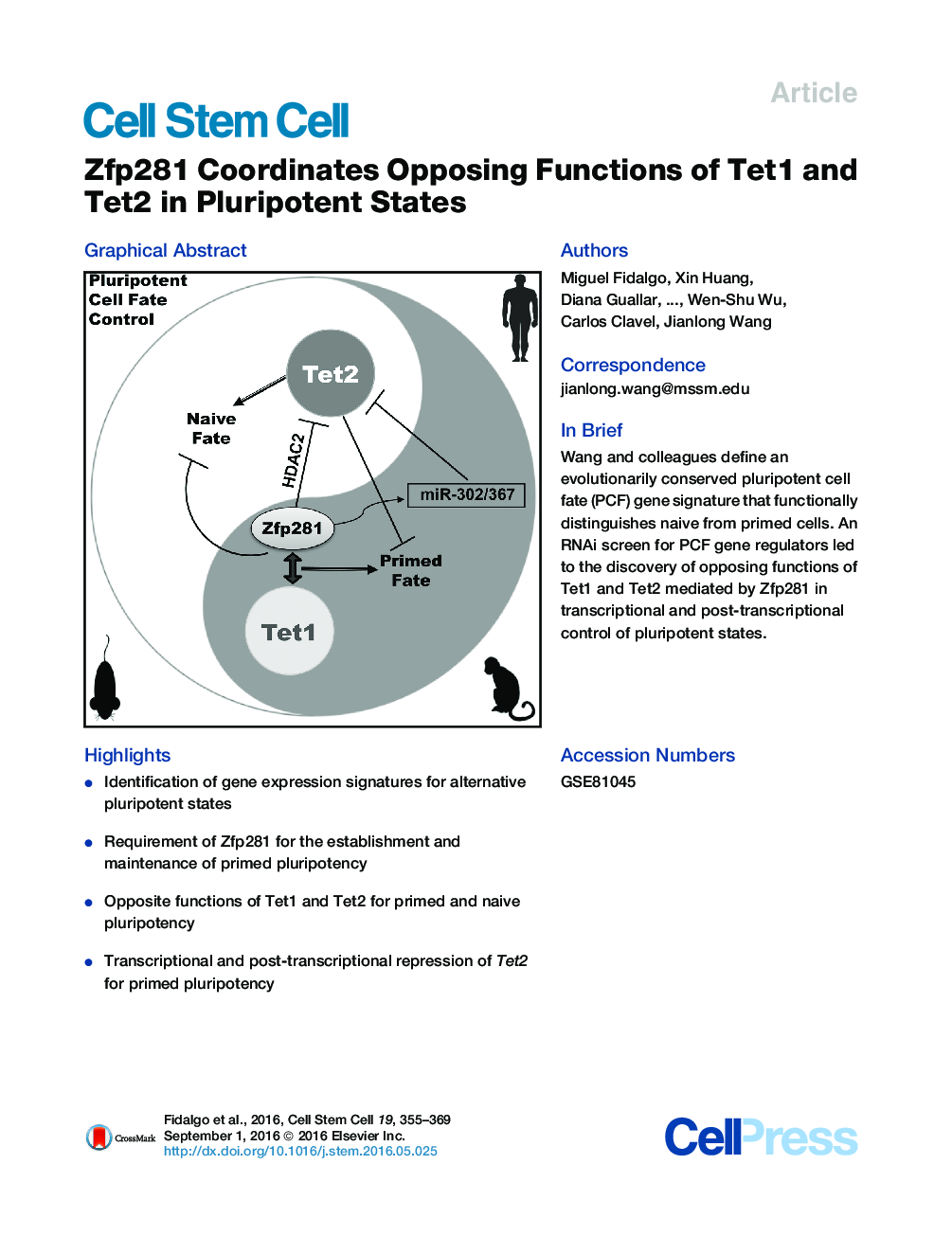| Article ID | Journal | Published Year | Pages | File Type |
|---|---|---|---|---|
| 2078433 | Cell Stem Cell | 2016 | 15 Pages |
•Identification of gene expression signatures for alternative pluripotent states•Requirement of Zfp281 for the establishment and maintenance of primed pluripotency•Opposite functions of Tet1 and Tet2 for primed and naive pluripotency•Transcriptional and post-transcriptional repression of Tet2 for primed pluripotency
SummaryPluripotency is increasingly recognized as a spectrum of cell states defined by their growth conditions. Although naive and primed pluripotency states have been characterized molecularly, our understanding of events regulating state acquisition is wanting. Here, we performed comparative RNA sequencing of mouse embryonic stem cells (ESCs) and defined a pluripotent cell fate (PCF) gene signature associated with acquisition of naive and primed pluripotency. We identify Zfp281 as a key transcriptional regulator for primed pluripotency that also functions as a barrier toward achieving naive pluripotency in both mouse and human ESCs. Mechanistically, Zfp281 interacts with Tet1, but not Tet2, and its direct transcriptional target, miR-302/367, to negatively regulate Tet2 expression to establish and maintain primed pluripotency. Conversely, ectopic Tet2 alone, but not Tet1, efficiently reprograms primed cells toward naive pluripotency. Our study reveals a molecular circuitry in which opposing functions of Tet1 and Tet2 control acquisition of alternative pluripotent states.
Graphical AbstractFigure optionsDownload full-size imageDownload high-quality image (118 K)Download as PowerPoint slide
